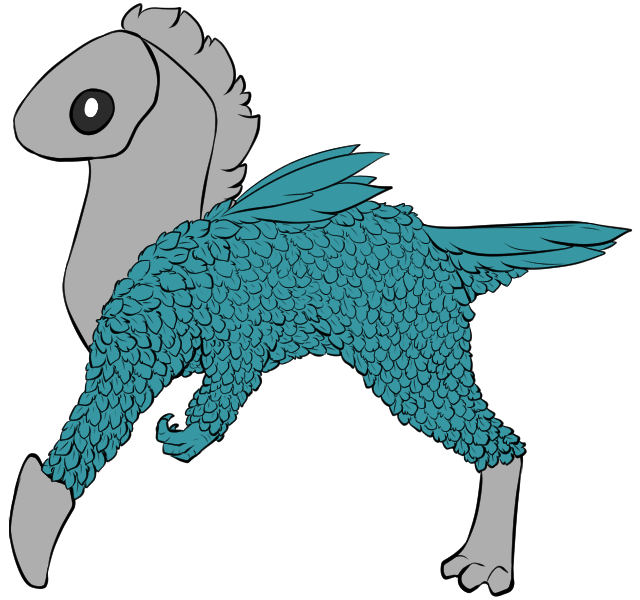Traits
Often times, a creo has traits that add on or change them from the basic creo anatomy. These traits come in different rarities and affect them in different ways.
Some traits have prime versions, which bumps up their rarity by one tier. A prime variant of a trait is when the trait covers over 75% of the creo's body. Traits with primed versions are marked with a *.
Trait Notes:
Traits cannot cover the 'stripe' of mane that is the minimum mane coverage a creo must have.
Traits can cover other parts of the neck that do not have mane growth, however, this does not count towards or against the trait being prime.
Common Traits
A creo can develop further organic mineral structures on parts of their bodies known as plating. made of the same material as their masks, plating can form all sorts of shapes and sizes anywhere on their bodies other than their manes.
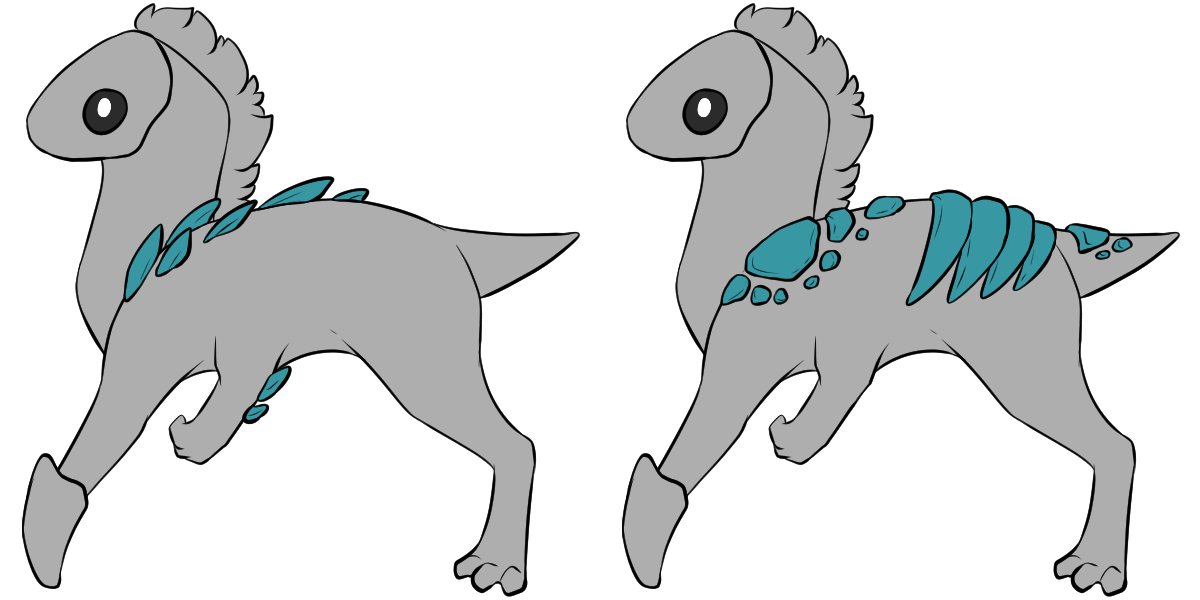
Creos can sometimes develop horns on their heads as a trait. While creo horns can develop and look like antlers, a creo does not ever shed them, making them horns rather than antlers. Horns are usually formed with material different from their masks.
Spikes or protruding bits of the mask will not be counted as horns. To qualify as the horn trait, their horns must either branch (like antlers), be significantly longer than the rest of their spikes, or be seperated from the mask (be it colour, material or lineart). Horns in blue, untraited masks in grey.
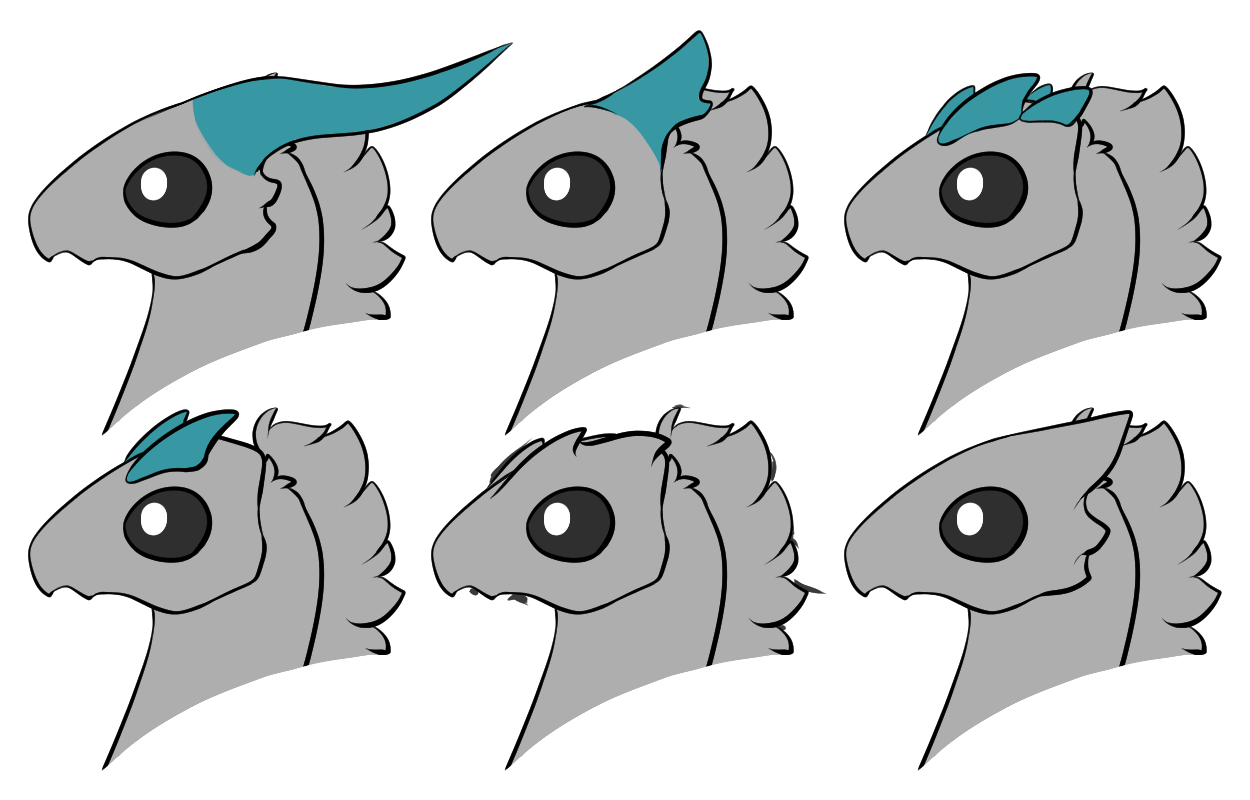
While creos usually have paws or stubby toes for their feet, some creos have a trait that develops into hooves instead. Their hooves can be made of the same material as their masks, but this isn't always the case.
Hooves trait in blue, untraited feet in grey.
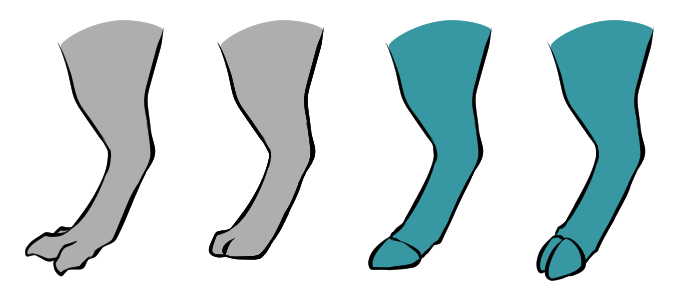
While some creos can decorate themselves with plants, creos with the undergrowth trait host plants instead. They grow living plants across their bodies, become part flora instead of being all fauna.
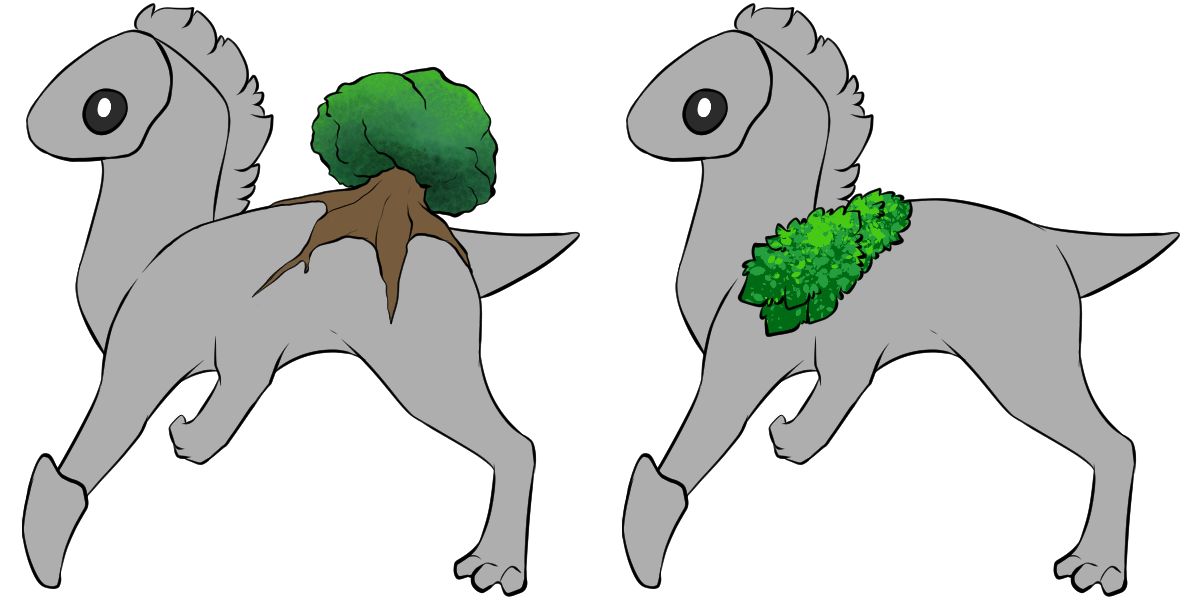
A creo's fur is usually limited to the mane around their necks. With the overcoat trait, they are now also able to grow fur on other parts of their body as well. The fur from the trait doesn't need to match the fur on their manes.
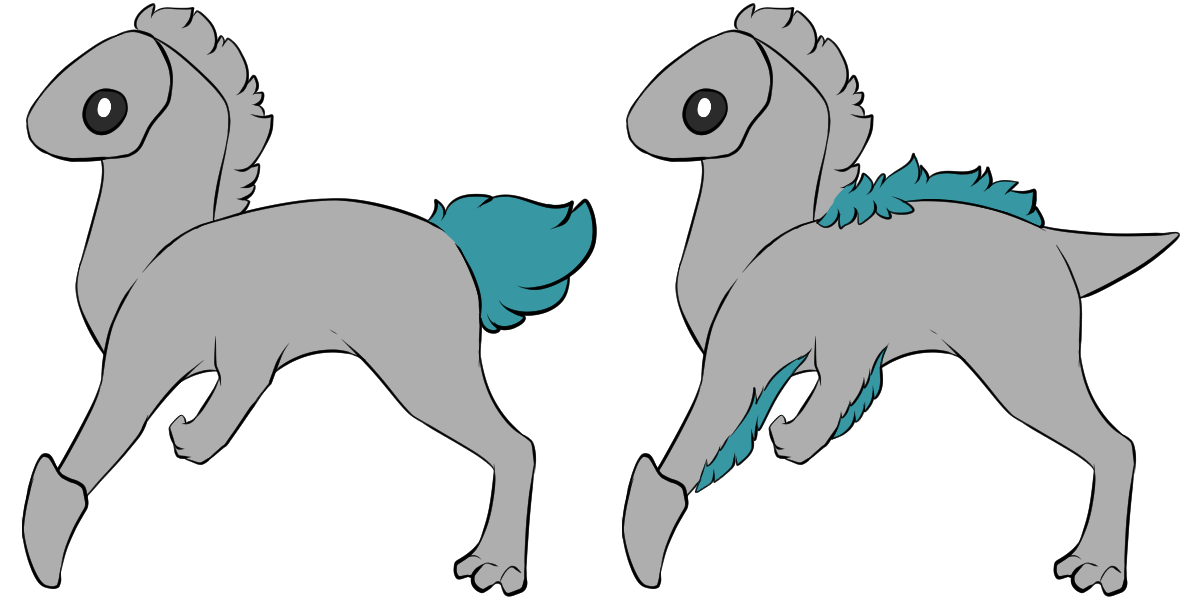
Some creos develop ears as a trait. These years can be a part of their masks, or organic behind their masks as well. Ears can combine with the multi trait for multiple ears on an individual.
All flesh ears are considered the ear trait. Mask ears are considered traited they contain ear details (lineart, inner ear markings or connected to the mask in a way only ears do). While ear like spikes matched with other spikes and lacking other ear details do not count as the ear trait. If there is only a single pair on an otherwise spikeless mask, it would be traited as 'ears' if they resemble ears, especially in regards to how they connect to the mask.
Ears trait in blue, traitless in grey.
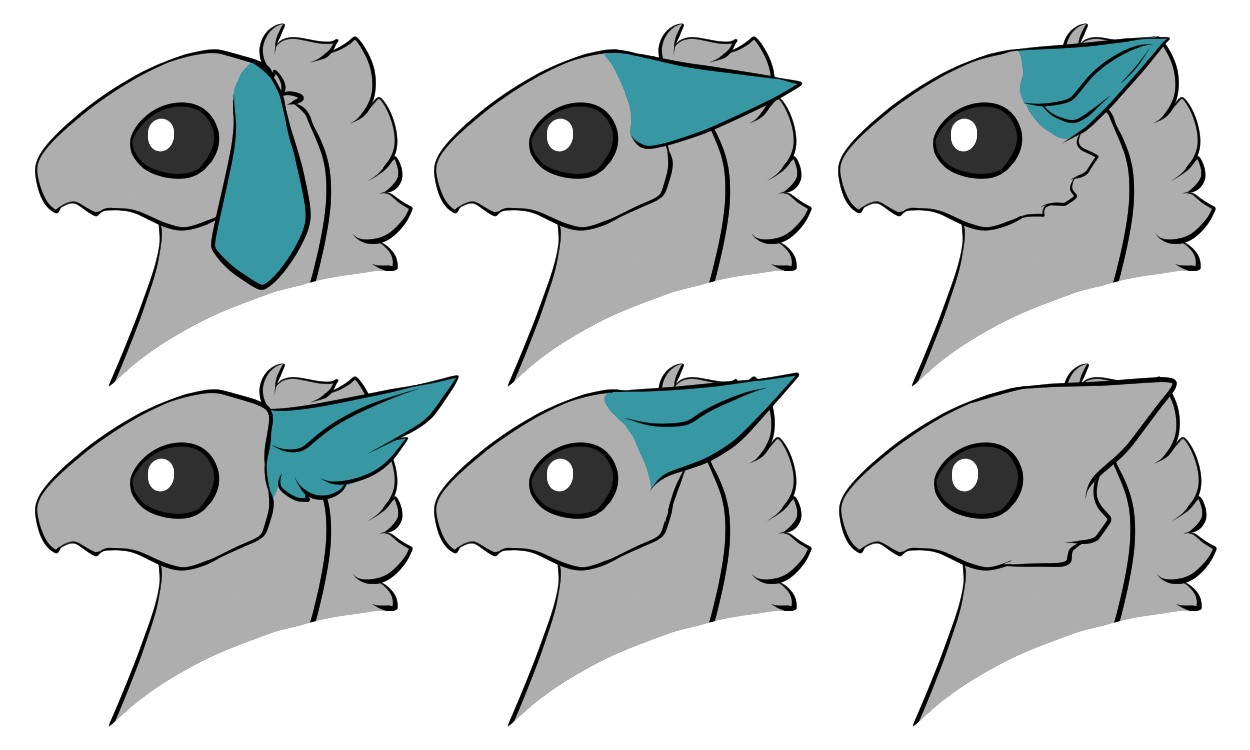
Uncommon Traits
The plating trait when it covers over seventy five percent of the creo's body.
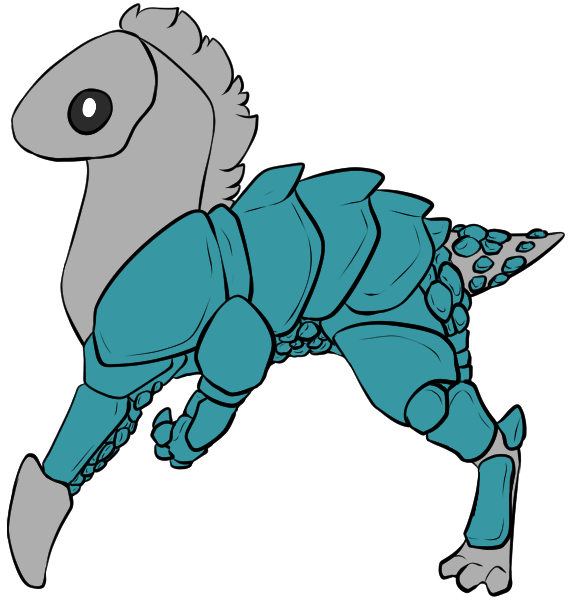
The undergrowth trait when it covers over seventy five percent of the creo's body.
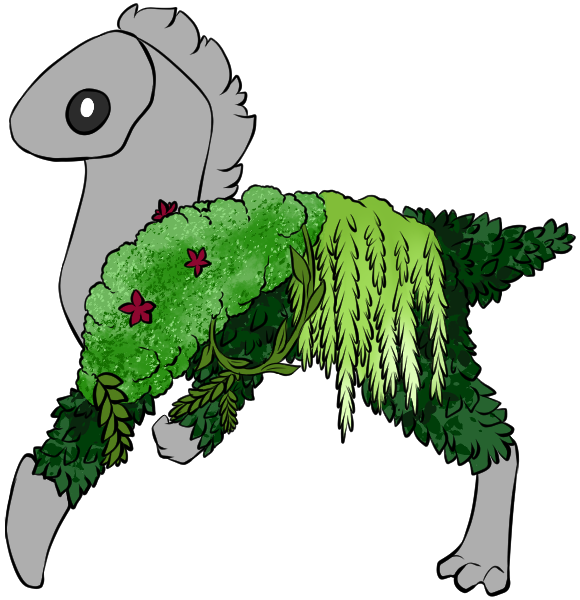
The overcoat trait when it covers over seventy five percent of the creo's body.
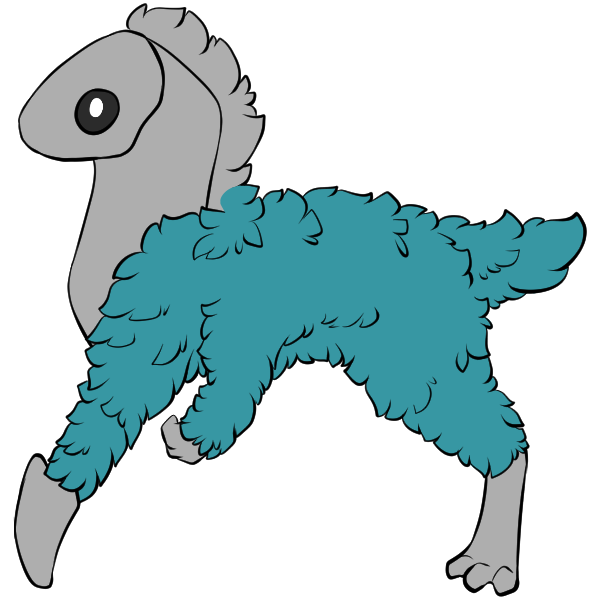
The false jaw trait is exactly as it is named, giving creos a false lower jaw on their masks. Despite appearances however, these jaws do not function or open, thus being false jaws.
A false jaw does not have to be entirely separated from the upper mask to count as a false jaw. As long as it looks like a 'jaw' exists and creates a 'mouth', it is considered a false jaw trait.
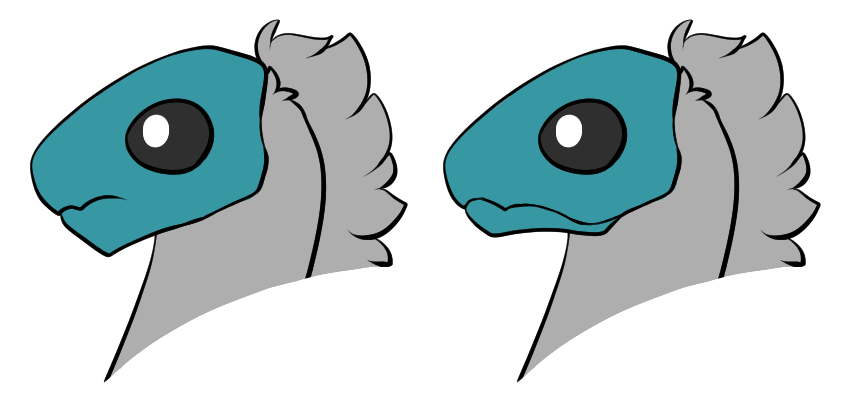
A creo with a multi trait has more than usual amount of something. Multi can apply to eyes or tails, and if the creo also has the ear trait, multi can stack and make multi ears.
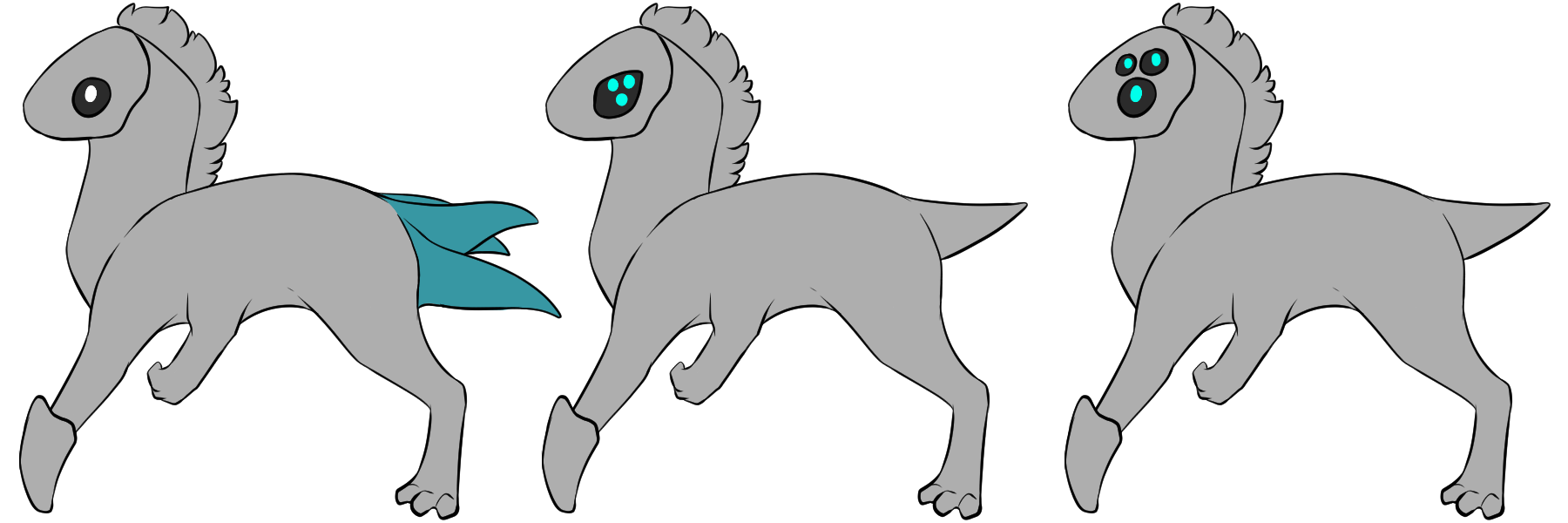
With the seabound trait, creos develop traits from aquatic creatures. These can be scales, fins or tentacles alike. Seabound traits can manifest anywhere on their bodies other than their manes, including webbed feet.
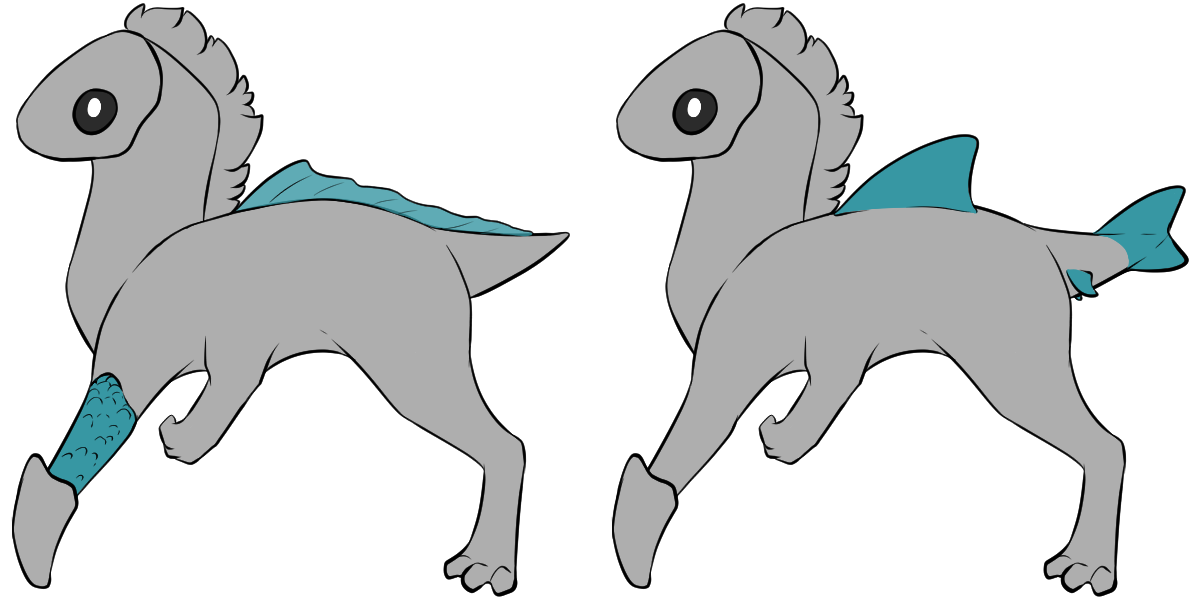
The synthesis trait changes the organic material of the creo's mask and sickles. Instead of the usual bone or stone like material, the minerals mimic different materials instead. These materials include crystal, glass, metal and plastic.
The synthesis trait can apply to sickles and mask without affecting the plating trait. Or it can stack with the plating trait without effect the creo's mask and sickles.
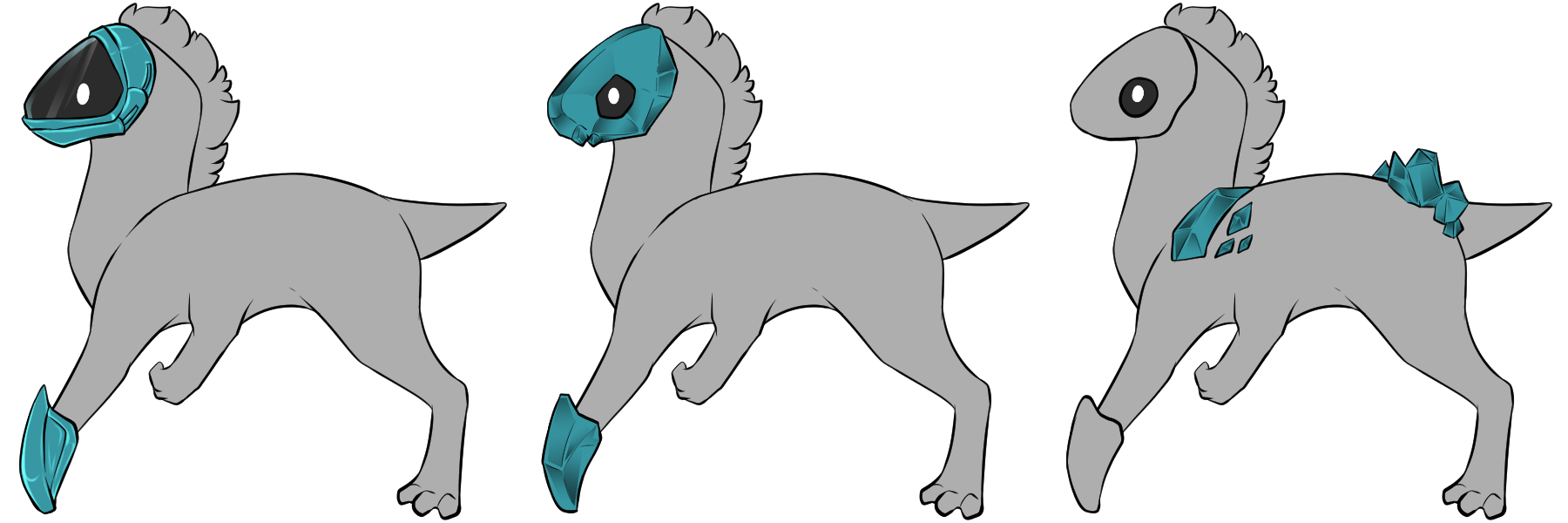
A creo with the etheral trait emits an elemental energy. This could be in the form of fire, smoke, electricity or liquids. It doesn't replace the parts of the creo, but surrounds the body.
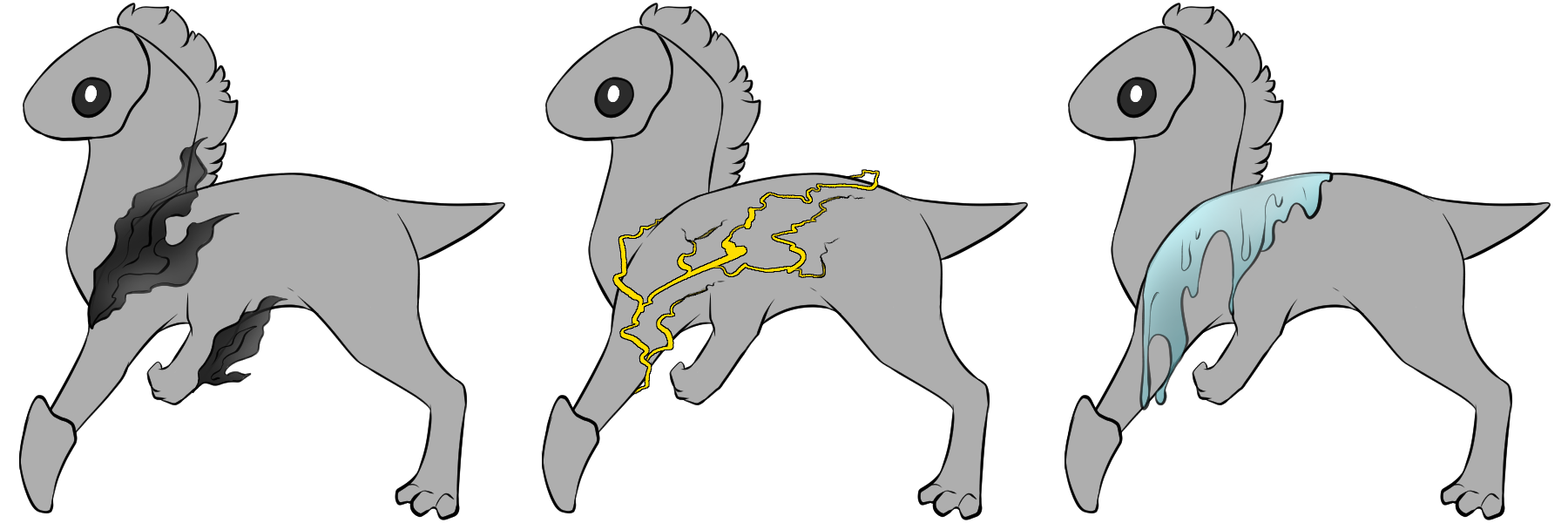
Scarce Traits
The seabound trait when it covers over seventy five percent of the creo's body.
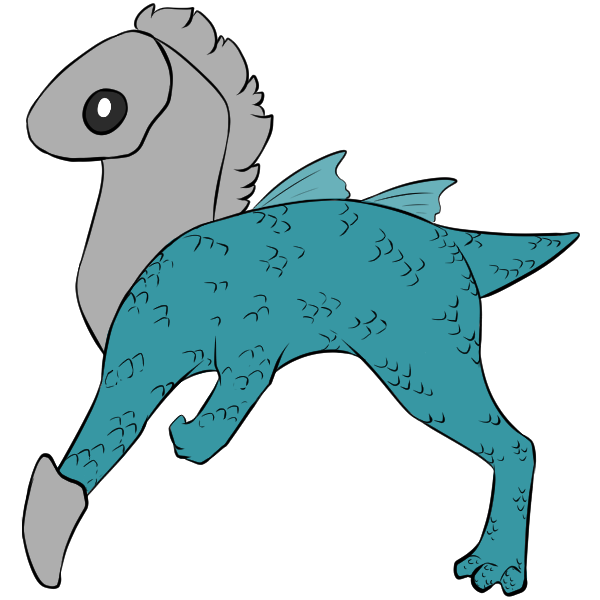
The ethereal trait when it covers over seventy five percent of the creo's body.
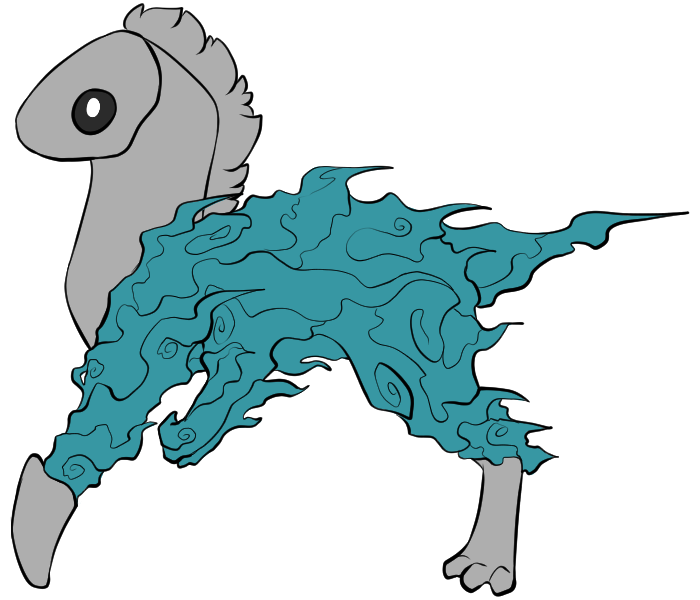
While a creo's eye can stop working from damage, sometimes a creo simply didn't have them in the first place. One of the few traits that can be seen on a stape, the eye trait does as it is named, causing a creo to develop without eyes. While their masks still serve as a rudimentary sensor of light, an eyeless creo does not have the full sight afford to them by eyes.
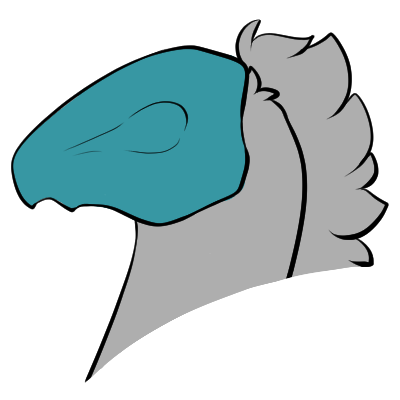
The skybound trait allows a creo to grow feathers or have talons like avians. The skybound trait can allow for feathers to replace a creo's natural mane as well. Despite the trait's name, this trait does not allow for wings.
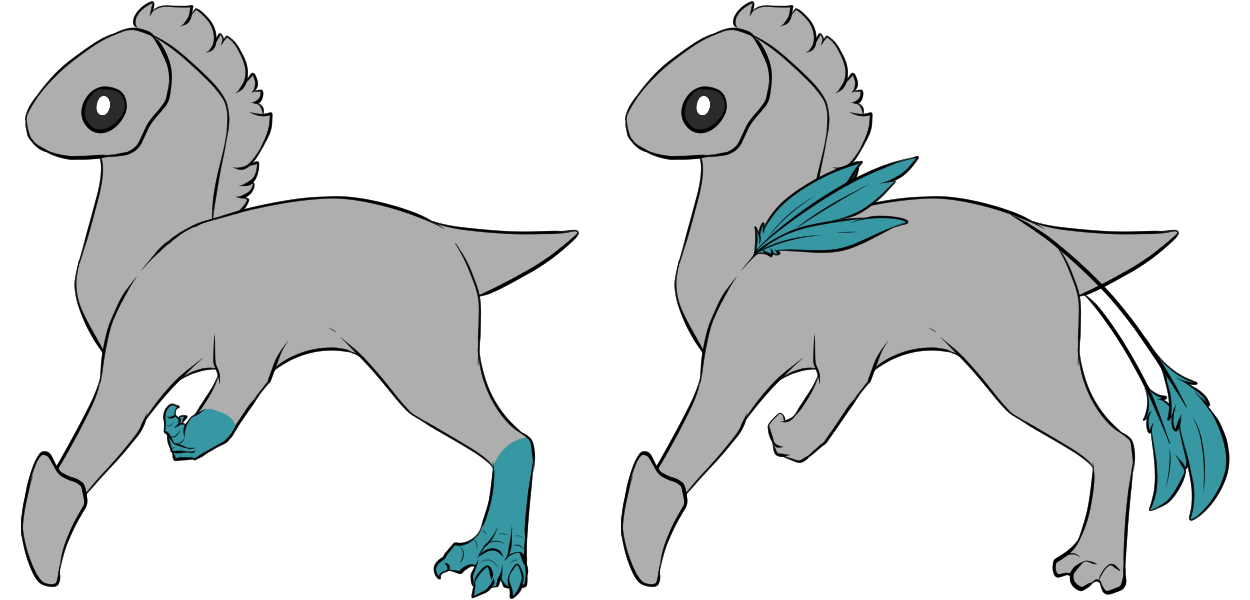
Some creos are able to manifest floating 'objects' or 'halos'. They float around the area behind the creo's head and above their backs. No one is quite sure how they work, but these objects are still a part of the creo.
Below is a diagram of where the wreath trait manifests. Light blue is where the trait is located, while darker areas are where it can extend to, however, no wreath can exist only in dark blue areas, and but 'start' in the light blue regions.
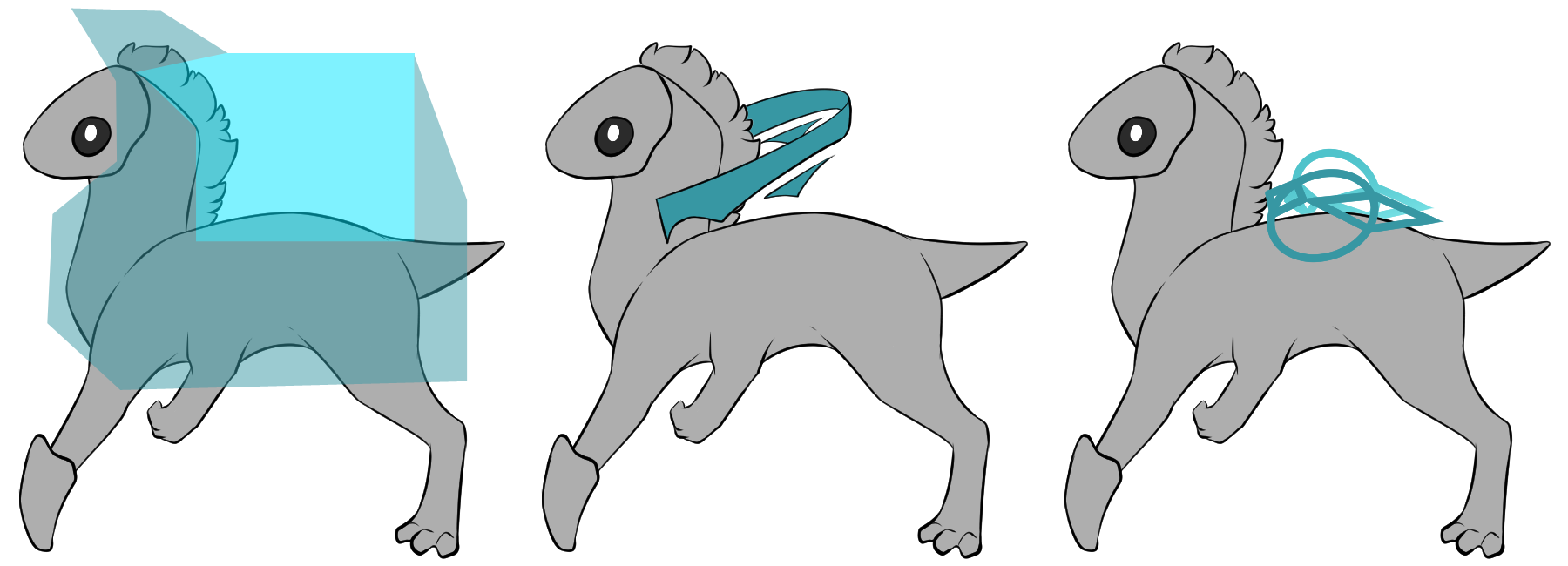
Rare Traits
The skybound trait when it covers over seventy five percent of the creo's body.
